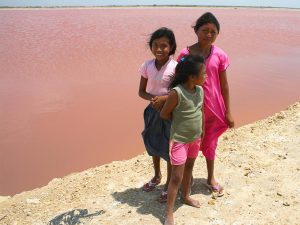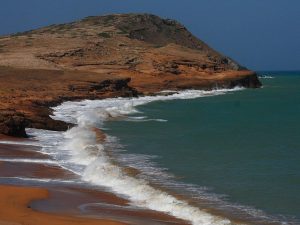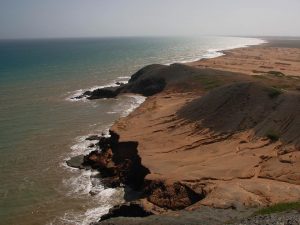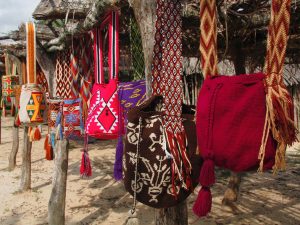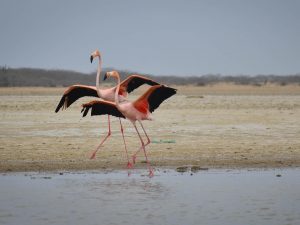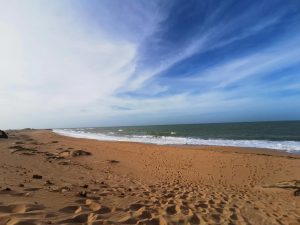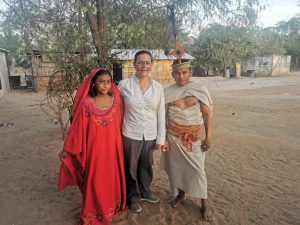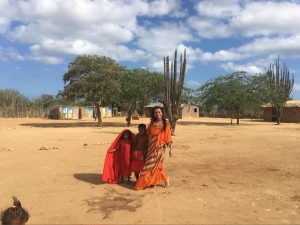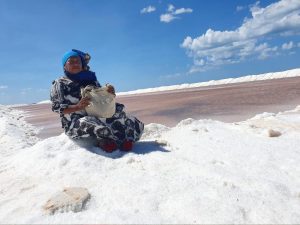La Guajira - Cabo de la Vela Punta Gallinas
Emblematic Places
La Guajira department of Colombia is situated in the extreme north of the country bordering the Caribbean Sea and the country of Venezuela. In La Guajira you will find the northernmost point of South America called Punta Gallinas. La Guajira represents different ecosystems; the most predominant are the desert and the dry and humid mountain jungle. The people who live in the Guajira department are called los “wayu”.
Traveling to La Guajira is a unique experience where the traveller will find infinite landscapes and many initiatives of the local communities to show its culture and the natural wealth of its territory.
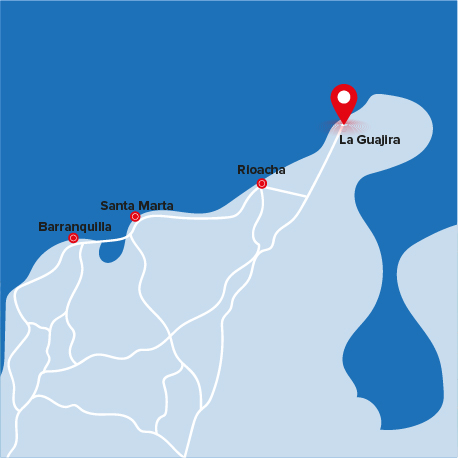
Day 1: At 5:00 am, we will depart from Riohacha to Uribía, the indigenous capital of La Guajira. In Uribía you will have a short break and breakfast. Afterwards we will continue towards one of the most famous places in La Guajira – Salinas de Manaure. You will tour around the ponds where the workers extract and process salt in an artisan way. Furthermore you will visit the Rancheria Wualapuinje where you will learn the rituals, customs, traditional dance, as well enjoy their typical food.
Finally you will start the journey of approximately 2 hours to Cabo de la Vela where we will take lunch and leave our things in the lodge.
In the afternoon you will hike up to the Pilón de Azúcar – the sacred place of the Wayuu community. You will visit the Ojo de Agua and Dorada beaches and enjoy an incredible sunset. Return to the lodge for dinner and rest. You will sleep in basic cabins in beds.
Day 2: After breakfast we will depart to Punta Gallinas – the furthest northern point of South America. Before we arrive, we will stop in Bahía Honda to have lunch at a restaurant facing the sea and have the opportunity to take a shower. After crossing the arid desert, you will connect with one of the most famous places in La Guajira: Las Dunas de Taroa. We will give you time to contemplate and let yourself fall in love with the beauty of this area without any rush and on your own pace. You will visit the Lighthouse and the beaches of Punta Aguja – a perfect place for the sunset. When you arrive to the cabins, you can participate in a Wayuu weaving activity and we will get to know two local projects developed by the Bahía Hondita community. Dinner and rest in the cabins.
Day 3: At around 7:00 am we will depart towards the Mayapo beaches, the drive might take about 5 hours. Upon arrival, you will visit the Maliwala Refuge where we will enjoy traditional cuisine. You will have a lunch that brings together some of the most exquisite dishes of the Guajira gastronomy. You will have time to enjoy the beach. This area is ideal for water sports as there are good winds, good waves and sandy beaches. In the afternoon we will return back to Riohacha. End of the tour.
- You can arrive to Riohacha by flight (from Bogota) or you can take ground transportation from Santa Marta (the drive takes about 3 hours).
- We recommend that you arrive the previous night since the tour on Day 1 starts early. We also recommend that you plan to stay in Riohacha when you return back from the tour on Day 3 or in case of flying make sure your flight is late in the night.
- Weather: during the day you will feel the sun and the breeze constantly, at night usually it gets much colder than normal, if you are sensitive to the cold, you could bring an additional blanket for good rest
- Seasons: if you travel in in December, January, July or August there will be many more travelers than in any other season, which is why the times for your meals usually requests more time. April, May and October are the rainy month; this is when the access to the desert will have many restrictions.
- The lodging in La Guajira is called “Rancherias”. Those are basic construction cabins. In Cabo de La Vela the cabins have better infrastructure, but in Punta Gallinas you will find more basic conditions and in La Macuira you will find the best. Many cabins maintain their typical construction with Yotojoro and mud, while others are already intervened with brick and roof materials.
- You will sleep in the cabins, in beds with private bathroom. It is very common to use a hammock (“chinchorro”) as well, so if you want to try it out, let us know and we will arrange it for you. Remember that all the cabins are very basic and the water is very scars (there is no hot water)
- There is no energy 24 hours
- It is essential to include a flashlight in the luggage
- Please note that there are ATMs or banks only in Riohacha. As soon as you leave the town, you can only use cash in Colombian pesos
- It is recommended to carry a medium size back pack. The bags with wheels might be uncomfortable for transfers. Carry only what is really necessary. If you have some extra luggage, you can leave it in Riohacha and pick it up on your return.
- In La Guajira there is a problem of waste management because there are many rural areas within the department with very basic infrastructure, so keep in mind the following recommendations: 1. Avoid using plastic cups, cigarettes, disposable spoons, water bottles, or plastic bags during your trip 2. We ask you to return all the garbage that you generate, in the car you will find garbage bags where you can bring it back to Riohacha.

